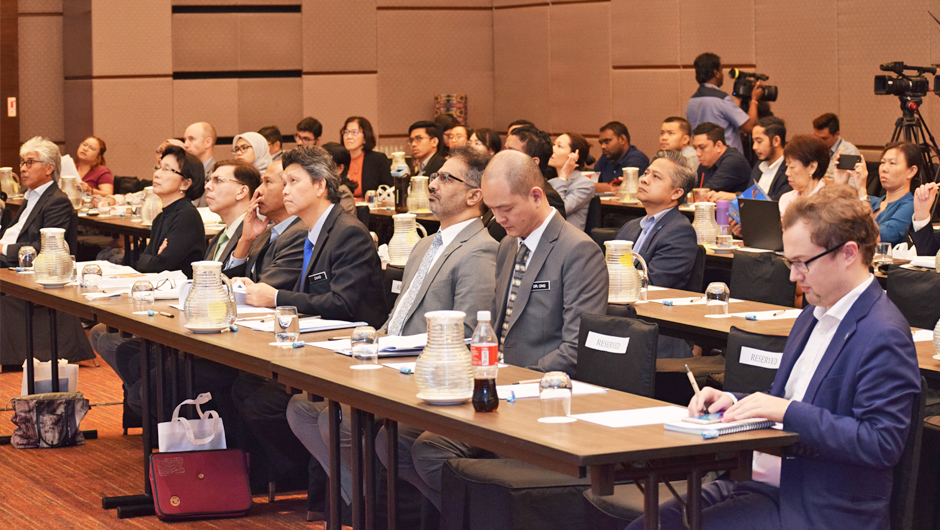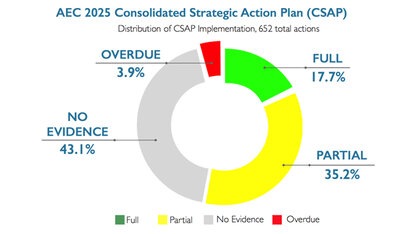17.7% of ASEAN Economic Community Blueprint 2025 Implemented

Two years since the Consolidated Strategic Action Plan (CSAP) to implement the ASEAN Economic Community (AEC) Blueprint 2025 was agreed, more than half of the total 647 actions lines have been fully or partially fulfilled. Of these, 17.7% have been fully realized.
In a report released by ASEAN Prosperity Initiative (API) on 26 September 2019 in Kuala Lumpur, Malaysia, which provided an external assessment of the implementation of the AEC Blueprint 2025, it concluded that “both intra-ASEAN trade in services and tourism continue to stagnate amidst increasing flows with the world.” Azam Wan Hashim of the Institute for Democracy and Economic Affairs (IDEAS), a research institute based in Malaysia, pointed out that “due to the relatively slower growth of intra-ASEAN trade and investment, it is unlikely that ASEAN will meet its target of doubling the share of intra-regional trade by 2025. This is largely driven by structural factors and the underlying dynamics of ASEAN economies, including the lack of trade complementarity and divergent development paths.”
The API report noted that “trade, investment, and movement of people continue to grow in absolute terms, but as in previous years, the share which is intra-ASEAN remains broadly unchanged.” “The success of the AEC must be judged in light of this underlying goal of ASEAN to promote multilateralization of trade openness among its members. The AEC also sets the explicit goal of developing ASEAN as both a single market and a single production base, and its success should be judged accordingly,” said Hashim.

Progress of ASEAN Integration
When considering the goal of developing a single production base, the success of the AEC should expressly not be measured in terms of growth of intra-ASEAN trade, but rather through greater participation of ASEAN Member States individually and collectively in the global economy, such as through integration into Global Value Chains (GVCs).
The push for a single production base can be justifiably measured in terms of intra-ASEAN cross border economic activity, as a single market should be characterized by businesses of one ASEAN Member State exporting goods and services seamlessly to the market of another. ASEAN leaders have set the ambitious target of doubling the share of intra-ASEAN trade by 2025, a goal which clearly reflects the ambition to develop a single market. However, the growth of intra-ASEAN trade is on par or slower with the growth in trade between ASEAN and the rest of the world.
ASEAN adopted the AEC Blueprint 2025, which laid out the work for ASEAN up to the new deadline of 2025. It consists of five pillars: a highly integrated and cohesive economy; competitive, innovative, and dynamic ASEAN; an ASEAN with enhanced economic connectivity and deeper sectoral cooperation; a resilient, inclusive, and people-oriented ASEAN; and a global ASEAN.
The API report was published by IDEAS with the support of the Friedrich Naumann Foundation for Freedom (FNF), a German political foundation that promotes social market economy. It measured both outcomes of and compliance to the blueprint. “Transparency is an important component for effective monitoring, which can be achieved by engaging the wider public on issues related to the implementation of the AEC,” said IDEAS Director of Research Laurence Todd.
The publication will also be presented in an event in Bangkok on 22 October 2019. Registration is open here.
Visit www.aseanprosperity.com to know more about the ASEAN integration.
-
Download the API ASEAN Integration Report 2019